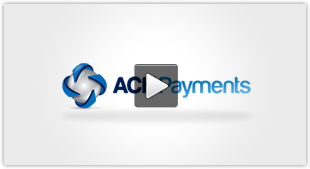Automated Clearing House (ACH) transactions are a widely utilized method for transferring funds between banks in the United States. ACH Check Verification Solutions are critical tools in this process. They serve as a safeguard for businesses by verifying the validity of account information before transactions are processed. This step is crucial for minimizing the risk of fraud and insufficient funds notices that can lead to costly fees and chargebacks for companies.

These verification solutions function by cross-referencing the provided checking account details against a database of known bank accounts. Their capability to provide real-time verification helps merchants and financial institutions ensure that the funds are available and that the account information matches the customer on record. By verifying ACH information at the point of sale or during transaction processing, businesses can make informed decisions and avoid potential financial pitfalls.
Additionally, the integration of ACH check verification systems within payment processing workflows has streamlined operations for many businesses. It allows them to offer an extra layer of security to their clientele while maintaining efficiency in their transaction procedures. These solutions are not only useful for preventing fraud but are also instrumental in enhancing customer trust by demonstrating a commitment to transactional integrity and security.
Understanding ACH Check Verification
ACH Check Verification Solutions bring efficiency and security to financial transactions, reducing the risk of fraudulent activities and ensuring compliance with regulatory standards.

ACH Network and Processing Basics
The ACH (Automated Clearing House) network is a secure system through which banks and credit unions process electronic transactions. NACHA governs this network, ensuring ACH payments and processing adhere to stringent guidelines. Financial institutions leverage ACH to move funds between bank accounts efficiently, employing Check 21 technology for faster clearing and settlement. The check verification process involves determining the account status to mitigate the risk of NSF (Non-Sufficient Funds) and fraudulent transactions.
Key Benefits of ACH Check Verification Services
ACH check verification services provide significant advantages:
- Security: They confirm the account status and reduce the likelihood of fraudulent transactions.
- Accuracy: Providers ensure precise verification, avoiding financial loss due to bounced checks or insufficient funds.
- Efficiency: These services streamline the payment process, helping businesses and financial institutions operate more smoothly.
The Role of Financial Entities in ACH Verification
Financial institutions, including banks and credit unions, are crucial in the ACH verification process. They access proprietary negative databases to flag negative data, such as unpaid items or a history of suspicious activity. This collaborative ecosystem ensures secure and reliable payment processing for merchants and retailers.
Preventing Fraud and Ensuring Security
To protect against check fraud and counterfeit checks, verification services verify account validity by cross-referencing with databases that contain negative data. This step is critical in preventing financial loss due to fraudulent transactions. Integration with APIs further fortifies the system, enabling online banking platforms to incorporate real-time verification.
Compliance and Regulatory Considerations
Compliance with NACHA and Check 21 regulations is non-negotiable for ACH transactions. Providers must adhere to these standards, including maintaining privacy, security, and regulatory reporting. The ACH verification process employs these rules to ensure financial institutions operate within the legal framework.
Integration and Support
Providers of ACH verification solutions offer various API integrations allowing seamless connection with a bank’s existing online banking system. These integrations facilitate access to customer’s bank account data and contribute to a robust payment process. Providers also furnish technical support, maintaining the secure and uninterrupted function of their services.
Technological Advancements in Verification
Innovative technologies enhance ACH check verification:
- Remote deposit: Allows customers to deposit checks via online banking.
- APIs: Enable real-time data flow and insights, promoting quicker verification.
- Lightbox and log-in modules: Improve account insight and user experience.
User Experience and Interface
The interface of ACH verification platforms significantly impacts the user experience. Solutions now offer simplified log-in procedures and user-friendly lightbox views for better account insight. This focus ensures that the verification process is accessible for all users, from banks to end consumers.
Implementing ACH Check Verification

When implementing ACH Check Verification Solutions, it’s crucial to choose the appropriate services, understand workflow specifics, manage risks effectively, select reliable providers, and ensure smooth onboarding processes.
Selecting the Right Verification Solutions
Identifying the most suitable check verification services involves evaluating the specific needs of a business. Solutions like iCheckGateway.com, Certegy, Microbilt, and TeleCheck offer a range of services. Businesses must consider factors such as the volume of ACH payments processed, the nature of transactions, and the level of risk associated with check acceptance.
Understanding the ACH Verification Workflow
The ACH verification workflow typically involves several steps, from initial check acceptance to final payment clearance. Service providers often utilize APIs to integrate check verification seamlessly into existing accounting systems. This approach supports both single and recurring payment models while aiming to reduce payment rejection and stop payments incidents through real-time verification.
Risk Management and Mitigation
To manage check acceptance risk, ACH verification services deploy various risk management tools. Providers leverage negative databases to flag high-risk transactions and apply NACHA’s guidelines to ensure compliance. Effective risk mitigation strategies protect against potential fraud and reduce the occurrence of stop payments and payment rejection.
Evaluating Verification Service Providers
When choosing a provider, businesses must assess their reputation, reliability, and the breadth of solutions offered. A thorough evaluation typically includes analyzing provider track records for accuracy in check verification services and the robustness of their fraud detection systems. Providers should also offer a clear and comprehensive reporting mechanism for tracking verification outcomes.
Onboarding and Client Integration
Effective onboarding and client integration are key to a successful implementation of ACH check verification Solutions. Providers must facilitate a smooth new client intake with clear guidance on API integration for ACH processing. The onboarding process should align with the business’s existing operational workflows and support a seamless transition to the new verification system.








